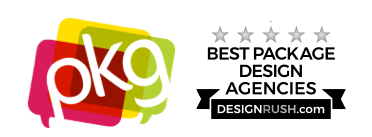
Food and beverage manufacturers the world over know that effective brand positioning is the difference between a successful product and one that simply languishes on the grocery shelf. Strong brand positioning typically results in strong sales.
What factors influence brand position most? And what can food manufacturers do to strengthen a brand's position in the marketplace?
Factors Influencing Brand Positioning
First, it makes sense to examine exactly what brand positioning is. TheBrandingJournal.com explains that brand positioning is "the act of designing the company's offering and image to occupy a distinctive place in the mind of the target market."
Brand positioning, then, directly affects customer loyalty and the consumer's willingness to purchase your product. Effective brand positioning taps into an emotional response with the consumer - ideally, a positive one that prompts a sale.
Factors that influence your brand positioning include:
- Clear brand mission statement that receives buy-in from both corporate leadership and employees
- Alignment of brand messaging across the entire organization
- Strength of the brand identity system
- Effective use of visuals and imagery in promotional materials and packaging
- Ability to capture brand message in a slogan and/or logo
For food and beverage manufacturers, perhaps the most significant factor among those stated above is the effective use of visuals and imagery in packaging. Why?
Consider the way consumers shop for food and drink items. Unlike other purchases, where a consumer may spend considerable time researching a product before making a purchasing decision, food and drink purchases typically result from a quick purchasing decision. For the most part, consumers "grab" grocery items.
This means that eye-catching packaging may be the most important factor for the consumer when choosing between your product and that of your competitors. In this scenario, your packaging strategy is your brand positioning strategy.
The Three Essentials of Packaging Design as Brand Positioning
Effective packaging design accomplishes three things related to brand positioning. Packaging must:
- Reflect business positioning clearly
- Communicate graphic identity
- Reflect the values of the targeted consumer group
How does packaging accomplish all this? Manufacturers can communicate business positioning by their choice of packaging materials and their use of color to strike a particular emotional chord. For instance, a brand looking to position itself as an eco-friendly brand will choose sustainable packing materials to broadcast that value proposition to consumers.
Similarly, a brand conveys graphic identity by the use of a recognizable logo, slogan, type of lettering, or color scheme. Strong brand positioning includes a consistent graphic identity across your entire product line. The aim? When a consumer sees your packaging, there should be an instant connection made between the product and your overall brand in the mind of the consumer.
Lastly, your packaging should reflect the values of your target audience. For instance, shoppers who consider themselves as frugal may be turned off by packaging they consider to be opulent. On the other hand, if your product is designed for high-end users, your packaging should project a luxurious look and feel.
Consumer Research Essential for Packaging Design and Brand Positioning
Matching your packaging design to the values of your target audience necessitates studying that audience to ascertain what those values are. Market research is vital to achieving excellence in packaging design and positioning your brand in the marketplace.

Conducting consumer research helps you design packages that appeal on the grocery aisle.
PKG's approach to packaging design and branding begins with communicating with consumers to gain insights into their value system, their preferences, and their buying habits. PKG's agile, consumer-driven approach includes truly listening to your customers and translating the insights gathered into design prototypes that can be tested quickly.
By repeating this process through multiple iterations, PKG is able to identify the right concepts and design the perfect packaging solution for your product. Contact us today to discuss your packaging design needs.
 |
 |







